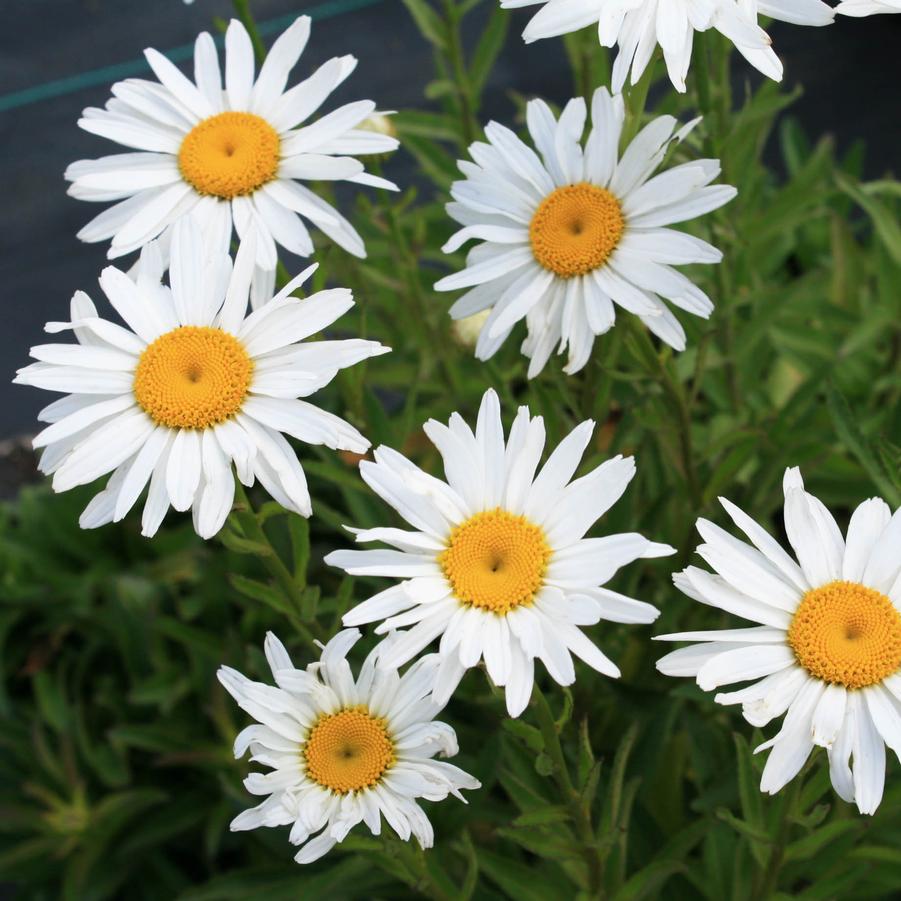
Leucanthemum x superbum 'Brightside' Shasta Daisy from Sandy's Plants
Flowers are the classic, large single white daisies with a yellow eye, valued in the garden and excellent for cutting. Divide plants every 2 to 3 years to maintain vigour. Removing faded flowers regularly will greatly increase the blooming time. May require staking if grown in rich soil. Attractive to butterflies.

Leucanthemum x superbum 'White Knight' Judi the Gardener
Leucanthemum x superbum, commonly known as Shasta Daisy, is a flowering perennial plant is a hybrid produced in 1890 by the American horticulturist Luther Burbank from several daisies. It is named after California's snowy Mount Shasta because of its large, white, snow-like flowers. Noted for its bright, cheerful flowers and resilient nature.
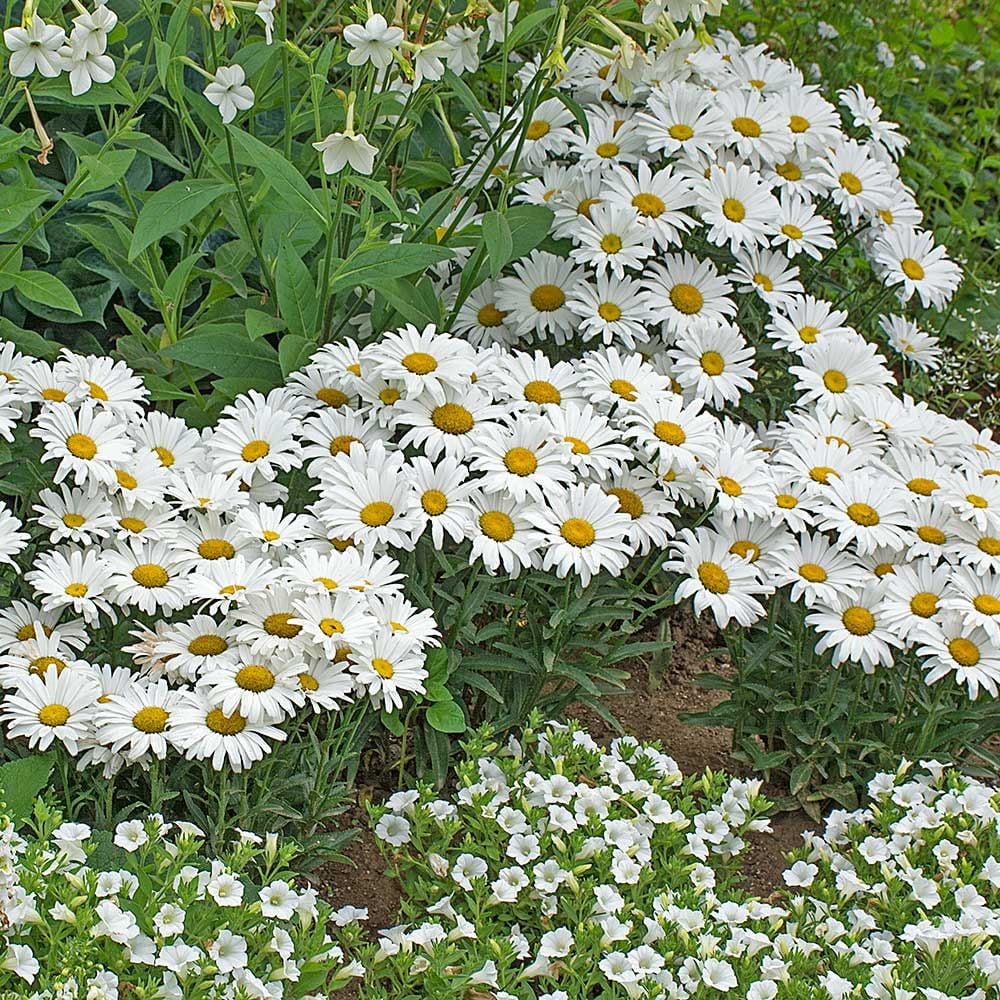
Leucanthemum x superbum Daisy May® White Flower Farm
Leucanthemum x superbum 'Sante' is a fantastic shasta daisy for the cuttings patch, bearing double-flowered pompom-like blooms in pure white with a yellow centre. Flowering from summer to mid-autumn, it's perfect for a mixed herbaceous border. Grow Leucanthemum x superbum 'Sante' in moist but well-drained soil in full sun to partial shade.

Shasta daisy (Leucanthemum X Superbum "Becky") Davenport Garden Centre
Leucanthemum × superbum 'Goldfinch'PBR. A deciduous herbaceous perennial, producing clumps of stems to 60cm (24in) high and with a similar spread. The stems bear dark green oval to lance-shaped leaves with serrated margins. Large, lemon-yellow fading to white, semi-double, daisies, with ruffled petals are produced over a long period in summer.
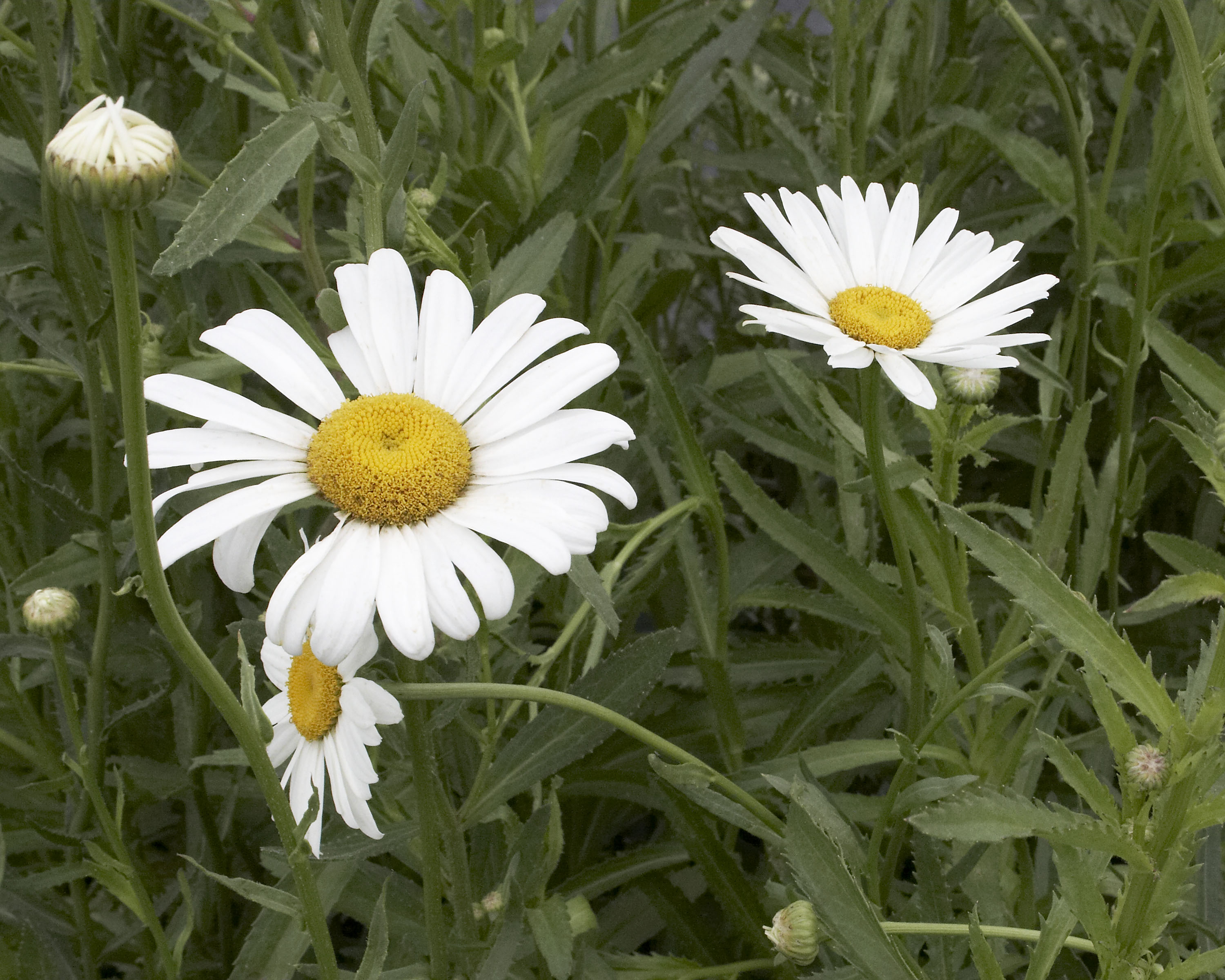
Leucanthemum_x_superbum_Alaska.jpg
Leucanthemum × superbum. Shasta daisy. L. x superbum is a robust, clump-forming perennial with thick, narrow, dark green leaves. From early summer to early autumn bears solitary, single or double, white flower heads up to 10cm across with yellow centres

Leucanthemum x superbum 'Real Glory'SHASTA DAISY Country Farm Perennials
Leucanthemum. ×. superbum. 'Crazy Daisy'. A clump forming herbaceous perennial with dark green, toothed, lance shaped leaves. Fringed, double white flowers with yellow centres, flowering for a long period in the summer if dead-headed regularly. Synonyms. Chrysanthemum 'Crazy Daisy'. Join the RHS today and save 25%.

Leucanthemum x superbum 'Becky' Trees to plant, White flower farm, Summer garden
Leucanthemum × superbum, the Shasta daisy, is a commonly grown [1] flowering herbaceous perennial plant with the classic daisy appearance of white petals (ray florets) around a yellow disc, similar to the oxeye daisy Leucanthemum vulgare Lam, but larger. It originated as a hybrid produced in 1890 by the American horticulturist Luther Burbank.

Leucanthemum x superbum 'Sunshine'SHASTA DAISY Country Farm Perennials
Shasta daisies are old-fashioned favorites for perennial borders and cut flowers, with single and double-flowered cultivars available. Plant in average to dry well-drained garden soil in full sun to partial shade. Use in the perennial border, containers, cutting garden or cottage garden. Cultivars come in different sizes and flower forms.

Leucanthemum x superbum Ballyrobert Gardens
Leucanthemum x superbum 'Becky' is a tall-growing shasta daisy, bearing single daisies with white petals and a yellow centre. Being single, the flowers are attractive to pollinators such as bees and butterflies, but the blooms are also perfect for cutting. Flowering from summer to mid-autumn, it's perfect for adding a late splash of colour to.

Leucanthemum x superbum 'Cloud Cirrus' Worfield Plants
Shasta daisy. Many gardeners get confused and, partly correctly, refer to their Shasta daisies as 'Chrysanthemums'. Leucanthemum x superbum is, in fact, a vigorous hybrid between two species: L. lacustre and L. maximum. It is also known as Chrysanthemum maximum but the correct botanical name is now recognised as being Leucanthemum x superbum.
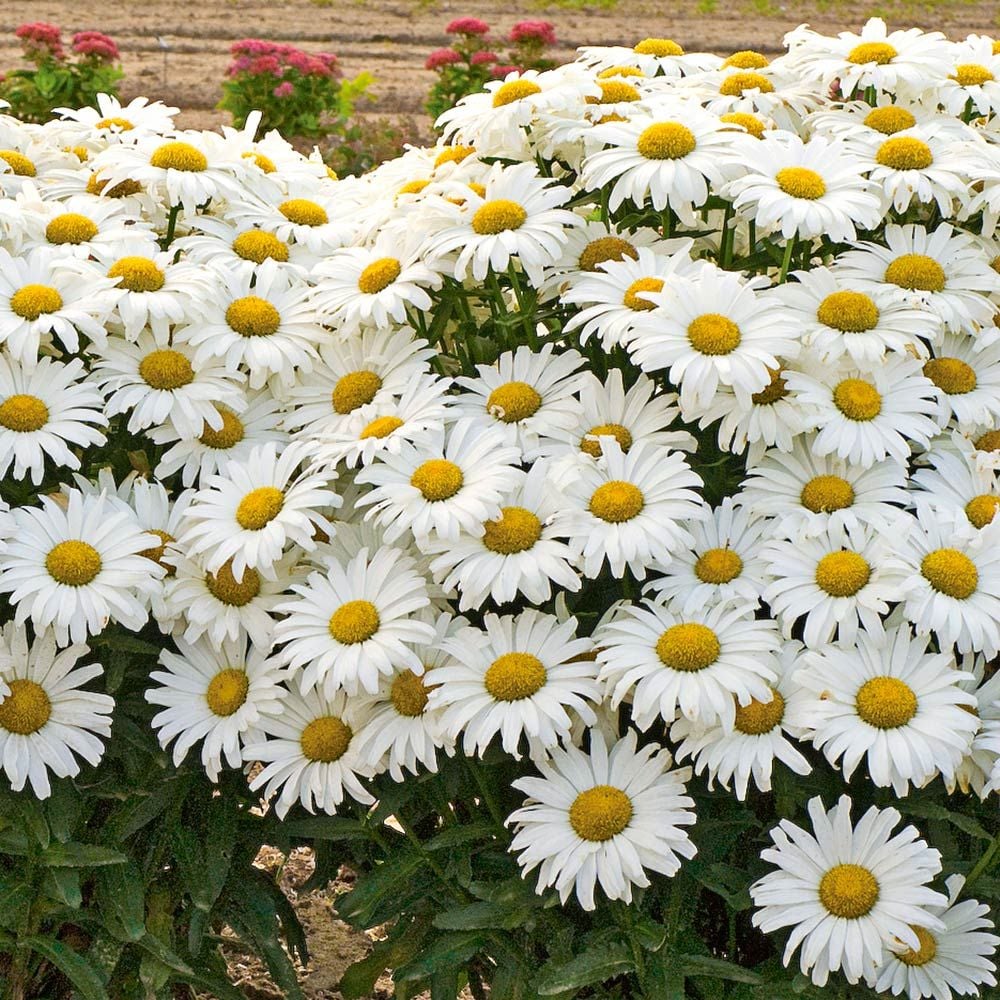
Leucanthemum x superbum Daisy May® White Flower Farm
Leucanthemum × superbum, commonly called Shasta daisy, is a hybrid developed by Luther Burbank (1849-1926). The hybrid name superbum means superb. 'Becky' is larger than most other Shasta cultivars, growing 3-4' tall on rigid stems which do not require staking. Features 3-4" diameter flower heads with the classic white rays and yellow.
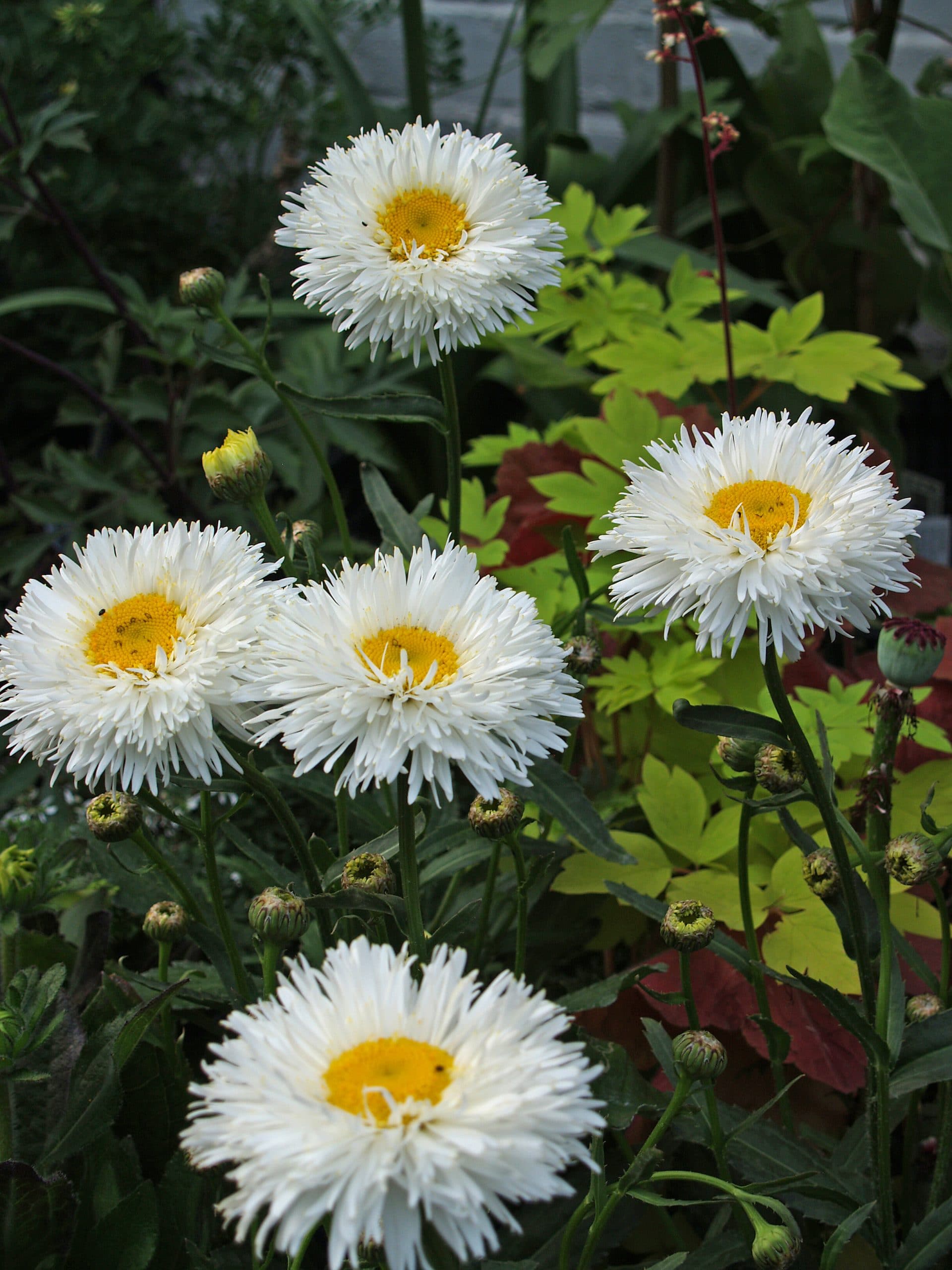
LEUCANTHEMUM x SUPERBUM ‘SHAPCOTT SUMMER CLOUDS’ Cotswold Garden Flowers
Highly popular, Leucanthemum x superbum 'Snowcap' (Shasta Daisy) is a herbaceous perennial valued for its abundant floral display and compact size. It produces a sea of large, pure white daisy flowers with golden yellow centers, 2-3 in. across (5-7 cm), atop a lush mound of medium to dark green foliage. Blooming for many weeks from early to late summer, if deadheaded, this Shasta Daisy is.

Leucanthemum x superbum 'Daisy May'
Leucanthemum x superbum, also known as Shasta Daisy, is a hybrid version that is by no means new, having first been developed in the 1890s. But some new fantastic varieties are bringing great value to the garden, developed to be more compact and to offer repeat flowering.

Leucanthemum x superbum (Shasta Daisy) North Carolina Extension Gardener Plant Toolbox
All-purpose Seaweed Stimulant. All-purpose organic concentrated seaweed feed that is a ready to use, derived from sustainable harvested kelp, that can be used on all outdoor and indoor plants, except acid loving plants. Perfect used in conjunction with Rootgrow™. Only £7.50.

Leucanthemum x superbum 'Crazy Daisy' from Neil Vanderkruk Holdings Inc.
Shasta daisy, Leucanthemum x superbum is a long-time gardeners' favourite. It's named after the snow-white peak of Mount Shasta, in California, where the plant was originally bred - the whiteness of the flowers is said to resemble the white of the peak. Today there are many varieties of shasta daisy that have been bred for improved.
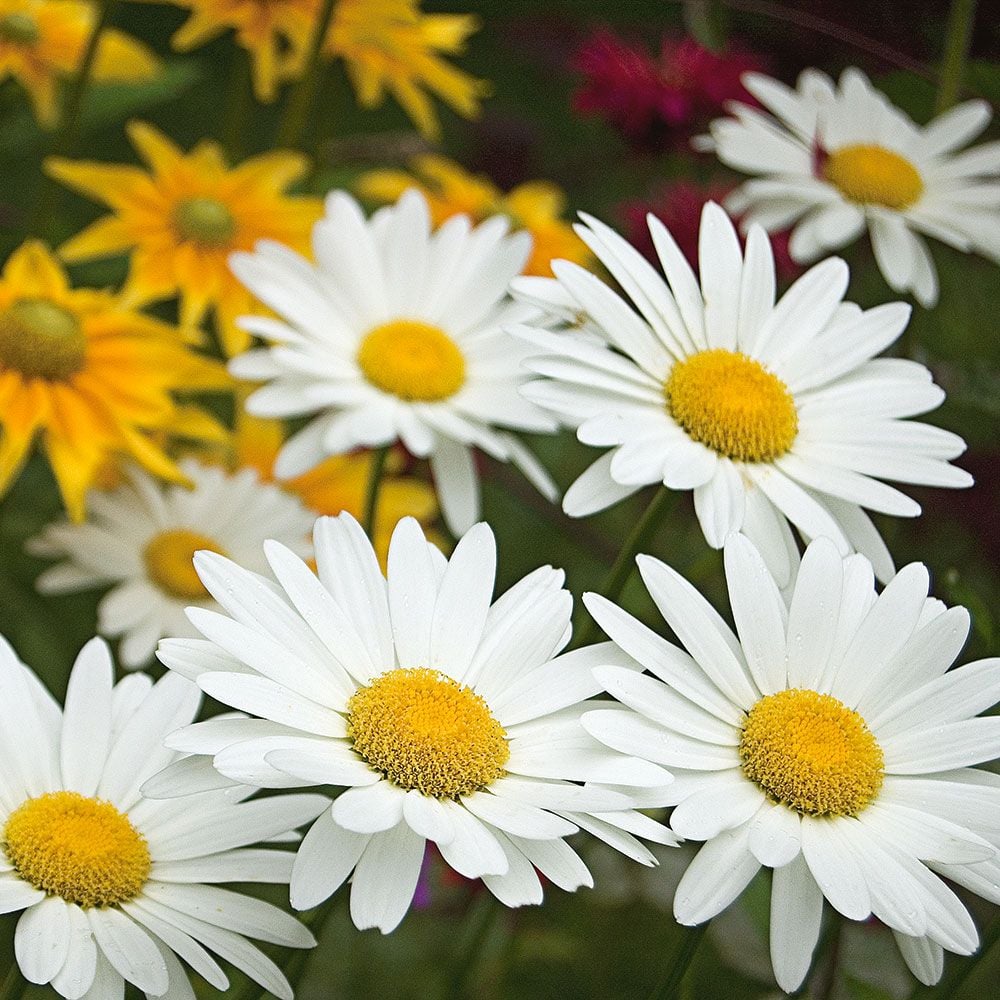
Leucanthemum x superbum Becky White Flower Farm
Named after the snowy peaks of Mount Shasta in California, the Shasta daisy (Leucanthemum x superbum) is a hardy hybrid developed in the 1800s by crossing the oxeye daisy with several wild daisy varieties.Today, there are 69 unique cultivars of the Shasta Daisy, according to the Royal Horticulture Society.